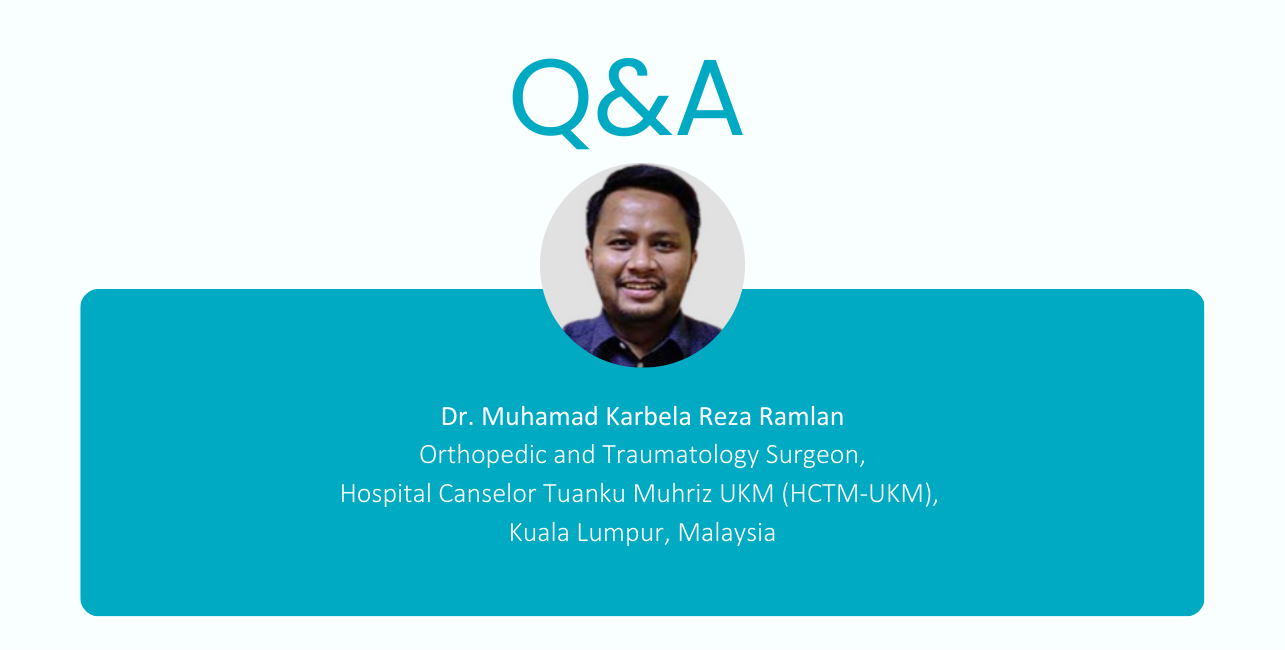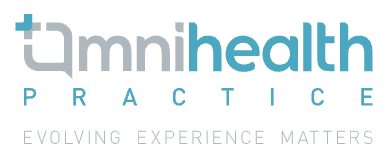UKM modified internal brace sets new standards in ACL reconstruction
8 Oct 2025
Share
Anterior cruciate ligament (ACL) injuries are among the most common and debilitating conditions affecting active individuals, from professional athletes to weekend sports enthusiasts.1 At Hospital Canselor Tuanku Muhriz (HCTM) Universiti Kebangsaan Malaysia (HCTM-UKM), ACL reconstruction (ACLR) is being reshaped through 2 key innovations: the UKM-modified internal brace (MUIB), designed to mitigate graft elongation and tunnel widening, and Malaysia’s first day-care ACL reconstruction pathway.2,3 Dr. Muhamad Karbela Reza Ramlan, an orthopedic surgeon at HCTM-UKM, is among those driving these innovations that integrate surgical precision with streamlined perioperative care, potentially leading to faster recovery and increased healthcare efficiency.
The conventional ACLR technique using interference screws and cortical button fixation, requires creating a full tibial tunnel and a femoral tunnel—removing a significant amount of bone.4 Increasingly, surgeons are turning to the all-inside approach—a newer, less invasive method that creates sockets in both the tibia and femur.4 This reduces bone loss, allows more anatomical graft placement, and supports faster rehabilitation.4 However, it also brings challenges, notably the risk of graft elongation, which can compromise knee stability and, in severe cases, lead to graft failure.5
“The MUIB addresses this issue,” explained Dr. Muhamad Karbela. “With conventional internal bracing, the support structure sits outside the graft, where friction against the bone tunnel can cause it to widen, eventually risking graft failure. The MUIB embeds the brace within the graft, eliminating direct tunnel contact but keeping strong mechanical support. This reduces elongation, limits tunnel widening, and addresses a key flaw in earlier designs. We have used it in over 300 patients, and early results show better biomechanical stability. Our ongoing studies will confirm its strength, resistance to elongation, and impact on patient recovery over time.”
Introducing day-care ACLR marks a first for Malaysia, with HCTM-UKM at the forefront.2 Traditionally, patients were kept overnight to ensure post-operative pain control, antibiotic administration, early mobilisation, and close observation for complications.6 However, with advancements in arthroscopic techniques, less invasive procedures, and improved analgesia, ACL reconstruction can now be safely performed on a day-care or outpatient basis—a model widely adopted in developed countries but still emerging in many developing nations.6 This shift in surgical delivery means eligible patients can return home the same day, avoiding overnight hospital stays.2 The benefits extend beyond patients.6 By eliminating the need for overnight stays, this approach reduces hospital bed occupancy, which in turn lowers the risk of hospital-acquired infections and helps optimise overall healthcare costs.6 In high-volume centers, day-care ACLR can improve surgical throughput, enabling more patients to receive timely treatment without straining infrastructure.6
In conclusion, by addressing the technical limitations of existing methods, streamlining perioperative care, and rethinking patient pathways, innovations such as the MUIB to pioneering day-care ACLR highlight how targeted surgical refinements and care pathway innovations can benefit both patients and the healthcare system.2
In an interview with Omnihealth Practice, Dr. Muhamad Karbela Reza Ramlan shared his practical insights into patient recovery, healthcare system advantages, and the key requirements for implementing day-care ACLR.
Q1: What does the recovery and rehabilitation pathway entail for patients undergoing day-care ACLR?
Dr. Karbela: Most patients return to sport within 9-12 months, while high-performance athletes on accelerated programs may do so in as little as seven months. Rehabilitation begins with weekly physiotherapy, tapering to biweekly and monthly as milestones are met. Athletes often recover faster due to greater motivation and access to dedicated rehabilitation teams. Regardless of patient profile, strict adherence to a structured protocol is critical. Recovery is always a collaborative effort between surgeon, physiotherapist, and patient.
Q2: Graft selection is critical in ACLR. What are the current preferences and considerations?
Dr. Karbela: Hamstring autografts remain the most common choice, though harvesting the tendon requires an additional incision, which can cause donor-site pain and prolong recovery. Allografts avoid this issue, allow earlier rehabilitation, and shorten surgical time, making them especially suited for day-care surgical models.
Q3: What criteria determine patient suitability for day-care ACLR, and what does successful implementation require?
Dr. Karbela: Strict patient selection is essential to ensure safety and positive outcomes. We typically limit candidates to those aged 18-50, without major comorbidities such as diabetes or hypertension, and who can return to the hospital quickly if needed.
Just as important are the program requirements: Surgeons must be proficient in advanced ACLR techniques, particularly the all-inside approach, and perioperative care should include long-acting nerve blocks for pain control and robust monitoring systems to track recovery, swelling, and wound healing in real time. Patient education and preoperative physiotherapy prepare candidates to manage home recovery and recognize warning signs. In resource-limited settings, targeted investment in training, equipment, and follow-up protocols is necessary for safe implementation and wider adoption.
References
- Musahl V, et al. Anterior cruciate ligament tear. N Engl J Med. 2019;380(24):2341-2348.
- HCTM-UKM peneraju pembedahan ACL penjagaan harian pertama di Malaysia . News release. HCTM. Jun 26, 2025. Available at: https://hctm.ukm.my/ortopedik/news/hctm-ukm-peneraju-pembedahan-acl-penjagaan-harian-pertama-di-malaysia/. Accessed: Aug 27, 2025.
- Md. Yusoff AH, et al. Biomechanical study of novel modified UKM Internal Bracing in ACL graft. MOJ. 2023;16, supplement A.
- Xiang S, et al. Comparison of a full tibial tunnel or an all-inside technique for anterior cruciate ligament reconstruction: An observational study. Medicine (Baltimore). 2024;103(42):e40135.
- Eichinger M, et al. Tunnel widening after ACL reconstruction with different fixation techniques: aperture fixation with biodegradable interference screws versus all-inside technique with suspensory cortical buttons. 5-year data from a prospective randomized trial. Arch Orthop Trauma Surg. 2023;143(11):6707-6718.
- Khan J, et al. Feasibility and cost-effectiveness of daycare anterior cruciate ligament reconstruction – A retrospective case series. Malays Orthop J. 2024 Nov;18(3):2-6.


